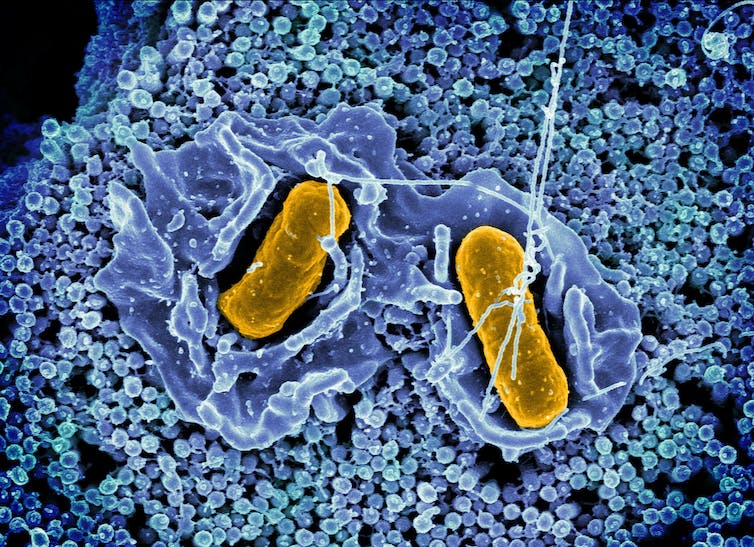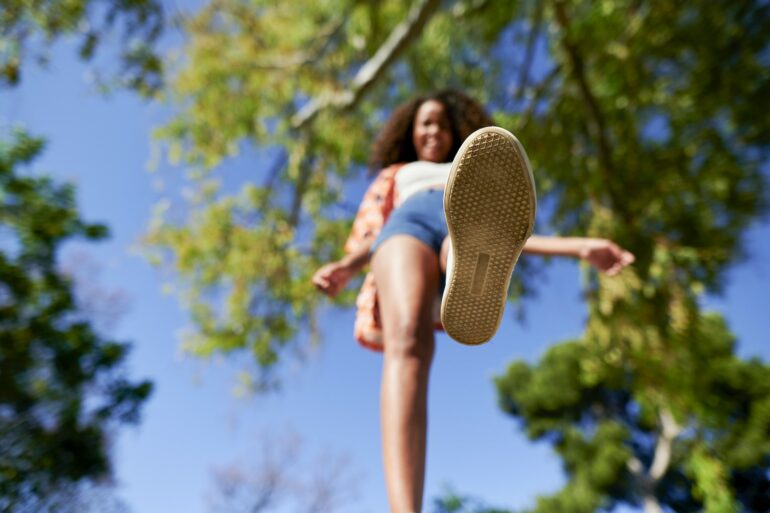
Curious Kids is a series for children of all ages. If you have a question you’d like an expert to answer, send it to [email protected].
Do viruses, bacteria and other small things get crushed like an ant when stepped on? – Ryan L., age 12, Chapel Hill, North Carolina
When you step on some things, like a banana, they squish and flatten to the ground. But when you step on other things, like a rock, they maintain their shape and aren’t affected. So what happens when you step on bacteria? Are they squishy?
While we work with microorganisms and other cells as chemical and biological engineers, neither of us has actually tried squishing them in the lab. One of us has a background in physics and studies mechanical forces in biology, while one of us genetically engineers microorganisms and cultivates them to make biofuels and other chemicals.
Between the two of us, we thought we could figure out the answer.
Forces and pressures
Let’s think about what happens when you step on something. Any time you push or pull on an object, you exert a force on it. What happens after that depends on how much force you’re exerting and the properties of the object.
The force your footstep exerts comes mainly from your body weight. Also important is the area over which that force is distributed on your foot, which creates pressure. That part about the area is important – it’s why you can walk on snow with snowshoes, but you’d sink with regular shoes.
You can calculate pressure by dividing the weight of an object by its area. If your foot is approximately a rectangle of 7 inches (about 18 centimeters) in length and 4 inches (10 cm) in width, it has a surface area of 28 square inches (180 square cm). And if your weight is 110 pounds (50 kilograms), the force you exert per square inch is roughly 3.9 pounds per square inch.
For comparison, the pressure of the air, or atmospheric pressure, on your body at sea level is 14.7 pounds per square inch. The atmosphere exerts significantly more pressure on you than your footstep does on the ground – you just don’t feel it because it is balanced by the internal pressure of the air inside your body.

It takes a little more than a stomp to kill bacteria like Salmonella.
NIAID/Flickr, CC BY
Stepping on a microbe
Now what happens to a bacterial cell when you apply the force of your footstep on it?
Bacteria have different shapes, ranging from spheres to rods and spirals. Bacterial cells have walls that protect their gel-like insides from the environment. How strong is a bacterial cell wall, and can it withstand the force of your footstep?
Scientists have studied the strength of bacterial cell walls for several reasons, including to find out whether high pressure can kill bacteria. People in the food industry use high pressure to make food such as milk safe for us to consume.
To determine the…



